You are using an out of date browser. It may not display this or other websites correctly.
You should upgrade or use an alternative browser.
You should upgrade or use an alternative browser.
JMR (Joint Multi-Role) & FVL (Future Vertical Lift) Programs
- Thread starter Grey Havoc
- Start date
- Joined
- 18 October 2006
- Messages
- 4,211
- Reaction score
- 4,920
From the Guy In Charge. Most up to date information on all of the Army FVL efforts.
You can skip the first 7 minutes unless you want to know what the Vertical Flight Society is up to.
- Joined
- 18 October 2006
- Messages
- 4,211
- Reaction score
- 4,920
Your reaction is likely the same as his staff."[addressing his comment to the industry as whole relatively to the program] We take every call, every meeting".

- Joined
- 18 October 2006
- Messages
- 4,211
- Reaction score
- 4,920
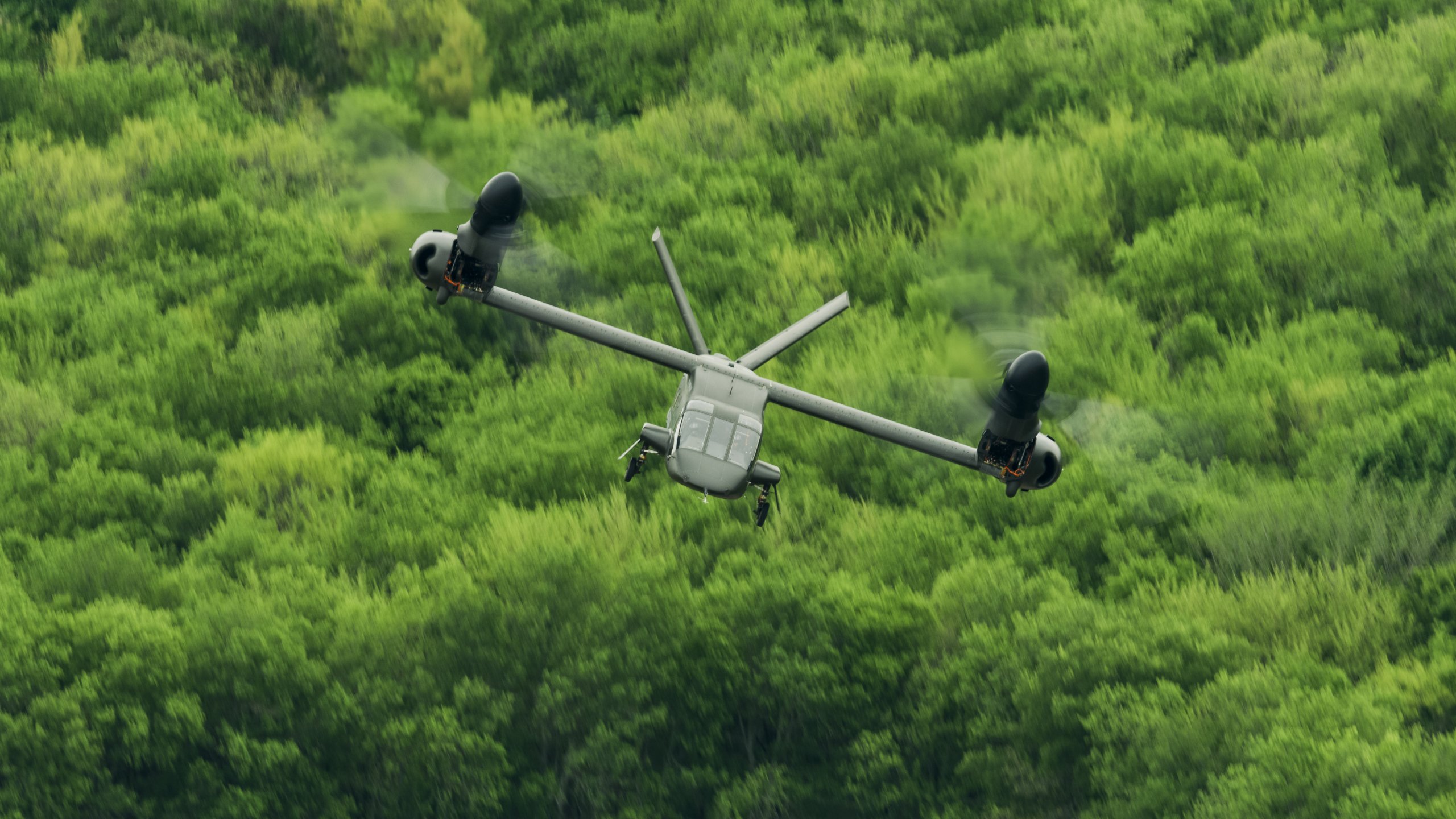
FLRAA and FARA - Procurement With a Difference - Armada International
Andrew Drwiega provides an update on the progress of the US Army's FLRAA and FARA Future Vertical Lift programmes.
- Joined
- 11 February 2007
- Messages
- 2,567
- Reaction score
- 4,381
There is also that decreasing the main rotor diameter, assuming that airfoil and geometry are the same, increases the rotation speed for each regime, hence raises the counter torque needs.
It might be then more efficient Power wise to resize the tail rotor as an open rotor than keeping it enclosed in a fenestron.
See also how the moment arm of the tail rotor was reduced with the change in dimensions.
There's going to be some interesting changes, at least in the FBW internals, given they've shifted the rotor thrust axis from the bottom of the tailboom and significantly below the rotor disc, to the top of the tailboom, level with the rotor disc, and definitely canted down (or up, I suppose).
jsport
what do you know about surfing Major? you're from-
- Joined
- 27 July 2011
- Messages
- 7,732
- Reaction score
- 5,751
Physics-Busting Requirements Challenge U.S. Army FARA Program | Aviation Week Network
The Army’s No. 1 aviation modernization priority is getting a reality check.
Col Greg Fortier, FARA Project Manager in the PEO-A office.
'There's no version of the world where you can go 180kts at 14k Lbs on a 3k shp engine and a 40ft rotor disc', Fortier said. ...
"Maybe you've got to put some (share of lift) on the wings if you're one of the single-rotor helicopter designs. Or maybe you put eight rotor blades on because you have extra tech.. Maybe those extra rotor blades are pretty big and pretty heavy. That transmission then becomes very heavy to get the speeds and you've got a pusher-prop in the back. Again, nobody's fault, right? It's just physics at the end of the day."
ok, but how is the Karem creature not the closest to eventually tackling some of these goals..
- Joined
- 18 October 2006
- Messages
- 4,211
- Reaction score
- 4,920
Mr. Karem & Co., were attempting to sell motorcycles to the Horse Cavalry...Physics-Busting Requirements Challenge U.S. Army FARA Program | Aviation Week Network
The Army’s No. 1 aviation modernization priority is getting a reality check.aviationweek.com
Col Greg Fortier, FARA Project Manager in the PEO-A office.
'There's no version of the world where you can go 180kts at 14k Lbs on a 3k shp engine and a 40ft rotor disc', Fortier said. ...
"Maybe you've got to put some (share of lift) on the wings if you're one of the single-rotor helicopter designs. Or maybe you put eight rotor blades on because you have extra tech.. Maybe those extra rotor blades are pretty big and pretty heavy. That transmission then becomes very heavy to get the speeds and you've got a pusher-prop in the back. Again, nobody's fault, right? It's just physics at the end of the day."
ok, but how is the Karem creature not the closest to eventually tackling some of these goals..
- Joined
- 18 October 2006
- Messages
- 4,211
- Reaction score
- 4,920
Well many of the participants have to work with the General, and they might want him to come back.I watched the VFS webinar. Good stuff, but I was surprised nobody asked Rugen about FARA's woes.
Last edited:
shin_getter
ACCESS: Top Secret
- Joined
- 1 June 2019
- Messages
- 1,109
- Reaction score
- 1,489
It is more like any air defense system that could defeat a equal cost UAV force can also defeat helicopters with capability to spare. UAVs have much lower signature, orders of magnitudes lower costs, order of magnitude potential in force scaling, and potentially combinations of faster speeds or longer operating durations. The superior payload for airframe cost means no helicopter born system can be cheaper than a matching vtol/fixed wing solution."No helicopter can hope to hardkill a SAM battery worth of missiles" I have heard this for almost 40 years. Yet UAV, flying at altitude, with no cover, have done a lot of hard killing of "a SAM battery worth of missiles". Certain middle-eastern country have repeatedly done exactly what you say cannot be done in one of the worlds most dense air defense environments.
This has not escaped army thinkers and thus ALE is developed, but instead of logical "forward" and "support" force structure, the 'rear force' is saddled with requirements like small rotor diameter, physics pushing speed and likes. This line of thinking is like 8" guns and 6" belt on a aircraft carrier. The entire concept of operation is also convoluted with helicopters, a slow low fuel-payload efficiency airframe, dropping fixed wing as opposed to simple increase capability of the fixed wing.
The high attitude attack is also superior, as light weight systems simply do not have the reach and even a low performing Bayraktar can overfly lots of manpads and SHORAD solutions. If low and slow worked, you'd expect the air force to low attitude airframes. Instead, attack helicopters gets quite a few shootdowns if you follow middle east conflicts, as manpads are not solved.
---------------
As of now few ground formation could stand attacks by combined arms air based attack that air forces are developing, with high low mix of capability across the spectrum for all tactical situations.
It is inconceivable that the army can replicate that level of SEAD capability with a single airframe with a single operating concept.
When it comes down to it, the hard SEAD problem is the airforce problem, and the hard air superiority problem is the airforce problem. What helicopters gets is an airframe that 'does' SEAD but is poorly integrated with the force that actually does SEAD. To actually improve national air attack capability giving the money to the air force would make more sense.
Imagine being the AD network with an A2AD bubble defeated by independent helicopters of all things. That'd would be the joke of the century. Against helicopter force, the defender do not even need to employ heavy emitting AD assets at all, and god knows how long it'd take to kill every guy with a large tube in the combat area.
----------------------
The advantages of having army aviation is that such forces are better integrated with rest of army forces than cross branch cooperation. As such army aviation ought to have operating concepts that leverage the rest of the army. Operations within army projected A2AD bubble and LRPF is what would work, not trying to get 'ahead' of friendly forces with independent deep maneuvers. Of course, when your own fires is in range, so is the enemy's so the battle is basically joined and there is no "before" phase.
Last edited:
- Joined
- 18 October 2006
- Messages
- 4,211
- Reaction score
- 4,920
Almost all, if not all major militaries, that have rotorcraft in their Army and use them in a combined arms fashion. This is a generally accepted methodology. As most of the AD systems are also tied into that same combined arms and are mostly designed for high altitude, the fixed wing aircraft are also at great risk. Thus the development of small expendable UAS to absorb the attack from the AD systems are growing in number.
Many of the first tier armies have also invested in VOLUME fire support systems that are very capable of defeating a maneuvering ground force before contact is made. If these are not dealt BEFORE contact with the opposing ground maneuver is made, the force will likely fail before the engagement.
While I am every bit as enthusiastic about the efforts of fixed wing platforms, I am not as optimistic of their impunity. Recall the Yom Kippur war where the aircraft were not able to effectively overcome the the AD technology, to the point that the United States was flying active squadron aircraft to Israel to deal with the losses. So if the AD technology is better than the air vehicle technology, blue sky flying things are not going to rein over the ground. Also the places that fixed wing have to start and end at, being the most documented bits of terrain other than ports, are not overly difficult to make non-functional. Even the USAF has realized this and is investing in VTOL technology more than it has done in a couple generations. Also they have taken to practicing using roads for runways.
I caution against overly responding to the recent Armenian/Azerbaijani war as an exemplar. While one must acknowledge that the capability to deal with AD with killer drones and UAV was demonstrated, those systems were not part of an integrated AD network, nor were many of the systems active when they were attacked. Similar circumstances obtain for Libya. Another note that the Israeli's are turning to long range high speed missiles for their activities again the IRGC in Syria because of the presence of an integrated AD and the fact that the competent integrated AD in Syria is no longer willing to give them carte' blanc. Also consider it has been clearly demonstrated that the attempts by Israel's antagonist to infiltrate UAV into their airspace have to date been completely unsuccessful.
The advent of UAV and killer drones have changed the battle calculus, but not turned it over. Nor will it. There are at least two companies who have demonstrated an ability to take out entire swarms of UAV in short order. Directed energies will become the AD challenge in the coming decade.
Finally let us not forget bandwidth. Swarms are great but they use a lot of bandwidth. Most UAV operate in the same bandwidth. Jamming the signal will cause most UAV to orbit or return to their landing location. Most first tier militaries are heavily invested in electronic warfare. Advanced electronic warfare and cyber combat are likely to be more game changing than unmanned flying things.
Many of the first tier armies have also invested in VOLUME fire support systems that are very capable of defeating a maneuvering ground force before contact is made. If these are not dealt BEFORE contact with the opposing ground maneuver is made, the force will likely fail before the engagement.
While I am every bit as enthusiastic about the efforts of fixed wing platforms, I am not as optimistic of their impunity. Recall the Yom Kippur war where the aircraft were not able to effectively overcome the the AD technology, to the point that the United States was flying active squadron aircraft to Israel to deal with the losses. So if the AD technology is better than the air vehicle technology, blue sky flying things are not going to rein over the ground. Also the places that fixed wing have to start and end at, being the most documented bits of terrain other than ports, are not overly difficult to make non-functional. Even the USAF has realized this and is investing in VTOL technology more than it has done in a couple generations. Also they have taken to practicing using roads for runways.
I caution against overly responding to the recent Armenian/Azerbaijani war as an exemplar. While one must acknowledge that the capability to deal with AD with killer drones and UAV was demonstrated, those systems were not part of an integrated AD network, nor were many of the systems active when they were attacked. Similar circumstances obtain for Libya. Another note that the Israeli's are turning to long range high speed missiles for their activities again the IRGC in Syria because of the presence of an integrated AD and the fact that the competent integrated AD in Syria is no longer willing to give them carte' blanc. Also consider it has been clearly demonstrated that the attempts by Israel's antagonist to infiltrate UAV into their airspace have to date been completely unsuccessful.
The advent of UAV and killer drones have changed the battle calculus, but not turned it over. Nor will it. There are at least two companies who have demonstrated an ability to take out entire swarms of UAV in short order. Directed energies will become the AD challenge in the coming decade.
Finally let us not forget bandwidth. Swarms are great but they use a lot of bandwidth. Most UAV operate in the same bandwidth. Jamming the signal will cause most UAV to orbit or return to their landing location. Most first tier militaries are heavily invested in electronic warfare. Advanced electronic warfare and cyber combat are likely to be more game changing than unmanned flying things.
Last edited:
- Joined
- 21 April 2009
- Messages
- 13,756
- Reaction score
- 7,696

US Army has flexibility in its path to a future attack recon aircraft, program leaders say
Army aviation leaders describe its process to reduce risk while shaping requirements and sticking to an ambitious schedule to field a Future Attack Reconnaissance Aircraft by 2030.
- Joined
- 4 July 2010
- Messages
- 2,515
- Reaction score
- 3,094
Bell Sponsored interview on V-280

 breakingdefense.com
breakingdefense.com

No Compromises: Tiltrotor Mission Effectiveness For Long-Range Air Assault - Breaking Defense
Bell’s V-280 Valor builds upon 600,000 hours of experience with the V-22 tiltrotor with a clean-sheet design to meet the Army’s requirement for an air-assault platform.
A Sikorsky-Boeing team has submitted its Defiant X rotorcraft proposal “early” for the US Army’s Future Long-Range Assault Aircraft (FLRAA) programme.
The bid comes as flight testing continues on the team’s SB-1 Defiant demonstrator, a compound co-axial helicopter upon which the proposed Defiant X is based, the companies said on 7 September. Data already gathered from the SB-1’s flight testing regime was included in the team’s proposal to the US Army.
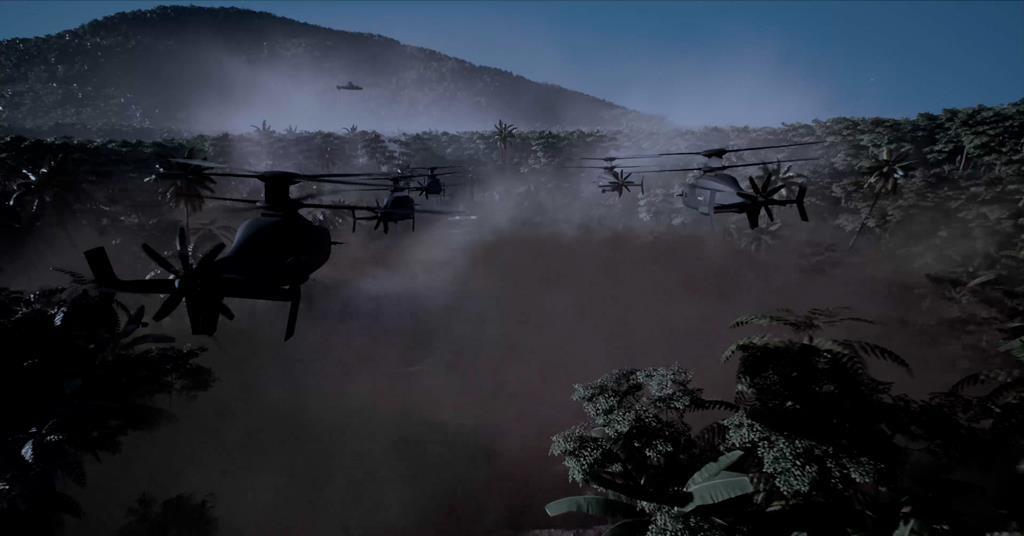
Sikorsky-Boeing makes ‘early’ US Army FLRAA proposal with Defiant X
A Sikorsky-Boeing team has submitted its Defiant X rotorcraft proposal "early" for the US Army's Future Long-Range Assault Aircraft (FLRAA) programme.
- Joined
- 18 October 2006
- Messages
- 4,211
- Reaction score
- 4,920
Given that many of their performance claims remain conjecture or based on a subscale demonstrator, I have to wonder if the team has "thrown in the towel". I am not sure that an early entry is going to buy them much.
- Joined
- 4 July 2010
- Messages
- 2,515
- Reaction score
- 3,094
I doubt they'd still be flying if that were the case, it's rather expensive to fly a one-off demonstrator. If there's a ploy here, it's more likely of the "if all they have is our bid to talk about, all they'll talk about is our bid!" sort.Given that many of their performance claims remain conjecture or based on a subscale demonstrator, I have to wonder if the team has "thrown in the towel". I am not sure that an early entry is going to buy them much.
- Joined
- 18 October 2006
- Messages
- 4,211
- Reaction score
- 4,920
Don't disagree, but they have not demonstrated a number of the primary mission parameters (low speed agility I think is a big one I have not heard about from them), so it is conjecture if they can do it. Now if they are still flying (?) they may have a plan. Their operational tempo certainly has been lackluster. To your point about having only the one bid; the other side of the coin would be, that the longer the gov has to read your documents the more questions they can come up with and faults they can dream up.I doubt they'd still be flying if that were the case, it's rather expensive to fly a one-off demonstrator. If there's a ploy here, it's more likely of the "if all they have is our bid to talk about, all they'll talk about is our bid!" sort.Given that many of their performance claims remain conjecture or based on a subscale demonstrator, I have to wonder if the team has "thrown in the towel". I am not sure that an early entry is going to buy them much.
I doubt they'd still be flying if that were the case, it's rather expensive to fly a one-off demonstrator. If there's a ploy here, it's more likely of the "if all they have is our bid to talk about, all they'll talk about is our bid!" sort.Given that many of their performance claims remain conjecture or based on a subscale demonstrator, I have to wonder if the team has "thrown in the towel". I am not sure that an early entry is going to buy them much.
I actually think I saw on a LinkedIn post that Bell submitted theirs on the same day, and possibly earlier than the Defiant team. I guess they just don't think its a big enough deal to talk about it.
- Joined
- 18 October 2006
- Messages
- 4,211
- Reaction score
- 4,920
That would be interesting. Neither would have been that early since the proposals were due this month I think.I doubt they'd still be flying if that were the case, it's rather expensive to fly a one-off demonstrator. If there's a ploy here, it's more likely of the "if all they have is our bid to talk about, all they'll talk about is our bid!" sort.Given that many of their performance claims remain conjecture or based on a subscale demonstrator, I have to wonder if the team has "thrown in the towel". I am not sure that an early entry is going to buy them much.
I actually think I saw on a LinkedIn post that Bell submitted theirs on the same day, and possibly earlier than the Defiant team. I guess they just don't think its a big enough deal to talk about it.
- Joined
- 21 April 2009
- Messages
- 13,756
- Reaction score
- 7,696
Prototype Could Enable Next-Gen Helo Capabilities
Prototype Could Enable Next-Gen Helo Capabilities
- Joined
- 18 October 2006
- Messages
- 4,211
- Reaction score
- 4,920
Think Collins Aerospace is teamed with Bell. Of course given the "open systems architecture" they might win a contract regardless.Prototype Could Enable Next-Gen Helo Capabilities
Prototype Could Enable Next-Gen Helo Capabilitieswww.nationaldefensemagazine.org
- Joined
- 3 October 2007
- Messages
- 1,960
- Reaction score
- 1,197
Bids will be accepted through 4th Quarter FY21 which, as you say, is this month. Keep in mind these people put out a press release if they successfully change a tire.That would be interesting. Neither would have been that early since the proposals were due this month I think.I doubt they'd still be flying if that were the case, it's rather expensive to fly a one-off demonstrator. If there's a ploy here, it's more likely of the "if all they have is our bid to talk about, all they'll talk about is our bid!" sort.Given that many of their performance claims remain conjecture or based on a subscale demonstrator, I have to wonder if the team has "thrown in the towel". I am not sure that an early entry is going to buy them much.
I actually think I saw on a LinkedIn post that Bell submitted theirs on the same day, and possibly earlier than the Defiant team. I guess they just don't think its a big enough deal to talk about it.
Last edited:
- Joined
- 21 April 2009
- Messages
- 13,756
- Reaction score
- 7,696

As the US Air Force looks to the future of special operations, vertical lift takes center stage
What comes after the MC-130 and CV-22s operated today by Air Force Special Operations Command?
- Joined
- 18 October 2006
- Messages
- 4,211
- Reaction score
- 4,920
Navy planning future vertical lift material development decision this month | InsideDefense.com
The Navy is planning to launch an analysis of alternatives for its future vertical lift program this fall after completing its material development decision by the end of September, a program spokeswoman told Inside Defense Friday.
Behind pay wall, but "... The Navy is planning to launch an analysis of alternatives for its future vertical lift program this fall after completing its material development decision by the end of September, a program spokeswoman told Inside Defense Friday. Program spokeswoman Megan Wasel said the Navy will launch a nine-month analysis of alternatives this fall after receiving over 30 responses “ranging from aircraft manufacturers to sub-systems suppliers” to the service’s January request for information for the program. "
- Joined
- 18 October 2006
- Messages
- 4,211
- Reaction score
- 4,920
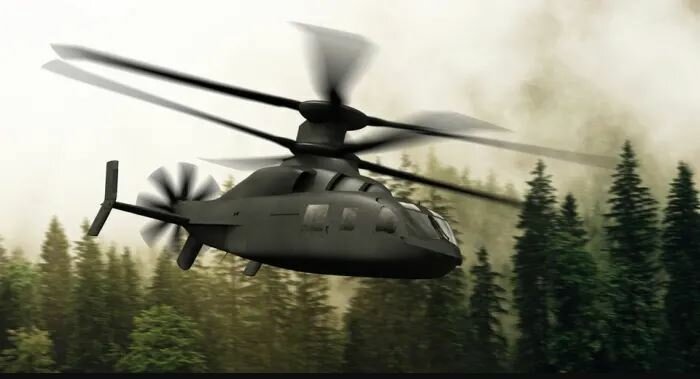
A bit more resolution on SB>1 Defiant with this picture. Things to note are the appearance of additional air intake on the forward overhead cover (presumably where hydraulics and some electronics are housed) and the ventral exhaust at the back of the aircraft. While it may be an oversight by the graphic artist, the "non-retractable" tail wheel appears ...retracted. Finally while it is only a graphic picture that could be in error, or intentionally misleading, or just the particular angle, but it appears to me that the separation of the main rotors is larger (taller).
“With the acknowledged caveat that no one knows for sure what the timeline actually is going to end up being for Future Vertical Lift, we have anticipations based on what we're being told ... because of the weight savings, the power consumption savings, the space savings, its ability to be mounted in a variety of configurations, the AirMaster C is adaptive enough that ... [it is] able to be incorporated into [FVL] and advanced airframe design pretty rapidly,” said Donaldson.
Thales, US Army weigh radar integration into battle management systems
Programme officials at Thales are exploring options for integration of the company's new software-defined airborne radar into the US Army's latest battlefield management...
www.janes.com
- Joined
- 18 October 2006
- Messages
- 4,211
- Reaction score
- 4,920

Report: US Army could field two new vertical lift aircraft if service lives within its means
The Army's pursuit to procure two future vertical lift aircraft by 2030 needs to have affordability at the forefront as it executes its programs, the Center for Strategic and Budgetary Assessment says in a new report.
Guarded good news for the Army FVL program(s)
Nice promises… haven’t we heard them all before?
The idea that one can build a significantly heavier and more powerful rotorcraft yet keep it as affordable as a Blackhawk or Apache requires some very optimistic assumptions…
The idea that one can build a significantly heavier and more powerful rotorcraft yet keep it as affordable as a Blackhawk or Apache requires some very optimistic assumptions…
- Joined
- 18 October 2006
- Messages
- 4,211
- Reaction score
- 4,920
I agree. However the US government, at least, appears more focused on reducing cost. I remain pessimistic. Let us hope that some of the recent technology advances will allow a flatline. vice significant cost growth.Nice promises… haven’t we heard them all before?
The idea that one can build a significantly heavier and more powerful rotorcraft yet keep it as affordable as a Blackhawk or Apache requires some very optimistic assumptions…
- Joined
- 18 October 2006
- Messages
- 4,211
- Reaction score
- 4,920

Key To Army FVL Weapons Systems Development - Modular Open Systems - Breaking Defense
Bell’s methodology to meet the Army’s Modular Open Systems Approach requirement is enabled by a common digital backbone that will be instantiated on both the V-280 Valor for FLRAA and the Bell 360 Invictus for FARA.

The FLRAA/FARA Ecosystem Enables All-Domain Operations In The Great Power Competition - Breaking Defense
A flight-proven tiltrotor and advanced helicopter are the optimum solutions for transformational air assault and attack/recon.
Second one is a Bell financed article, but has a good bit of rational for the FVL platforms mixed in.
Last edited:
- Joined
- 23 August 2011
- Messages
- 1,610
- Reaction score
- 4,772
Not sure if anyone has seen this....if V-280 wins (I think it will) it looks like Rolls Royce have another big win in the bag...
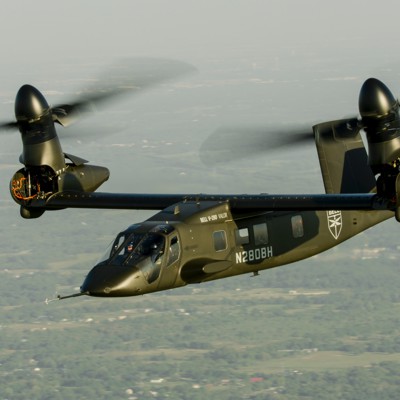
 www.defenseone.com
www.defenseone.com

Bell Picks Rolls-Royce Engine for V-280 Valor in Army Black Hawk Replacement Contest
The move dramatically increases the horsepower of the V-280 over the General Electric engines it uses today.
Defiant hits 247 knots, with some new big nose strakes, but still no maneuvering to speak of (Bill Fell even repeats himself from their last video in May almost verbatim about how they are going to be doing some "higher load factor" flights)
View: https://www.youtube.com/watch?v=zW8kH1YJwgc
- Joined
- 18 October 2006
- Messages
- 4,211
- Reaction score
- 4,920
OUCH!!!

 breakingdefense.com
breakingdefense.com

FARA Farce: What The Army Didn’t Learn From The F-35 - Breaking Defense
As the Army races forward to take flight in its Future Attack Reconnaissance Aircraft (FARA), Breaking Defense contributor and acquisition expert Bill Greenwalt sees too many troubling parallels with the Air Force’s infamous production of the F-35 Joint Strike Fighter. With taxpayer dollars and...
jsport
what do you know about surfing Major? you're from-
- Joined
- 27 July 2011
- Messages
- 7,732
- Reaction score
- 5,751
thank yasotay folks...let us add for emphasis..some folks have been sayin this for a long timeOUCH!!!

FARA Farce: What The Army Didn’t Learn From The F-35 - Breaking Defense
As the Army races forward to take flight in its Future Attack Reconnaissance Aircraft (FARA), Breaking Defense contributor and acquisition expert Bill Greenwalt sees too many troubling parallels with the Air Force’s infamous production of the F-35 Joint Strike Fighter. With taxpayer dollars and...breakingdefense.com
Are there any alternatives left to pursue at this late date? Right now, it seems only new Pentagon leadership or Congress can change the current dynamic. The first signal Congress could send is to either kill FARA outright or restructure it around the reality that this is not a production-ready aircraft program but a lower technology risk developmental prototyping effort that likely will not keep up with the threat. It may be worth funding, but it should not yet be a program of record.
jsport
what do you know about surfing Major? you're from-
- Joined
- 27 July 2011
- Messages
- 7,732
- Reaction score
- 5,751

'Come In Low': Army Aviation Modifies Training To Prepare For Rivals Like Russia, China - Breaking Defense
"We're going to be flying in lower flight profiles than we have over the last 20 years in counterinsurgency operations and so, even today, we are changing the way we train Army aviators," said Maj. Gen. David Francis.
something one would hope the USAF is listening to as well.
litzj
BLOG : http://jaesan-aero.blogspot.com/
KAI proposes S-97 similar thing???
- Joined
- 18 October 2006
- Messages
- 4,211
- Reaction score
- 4,920
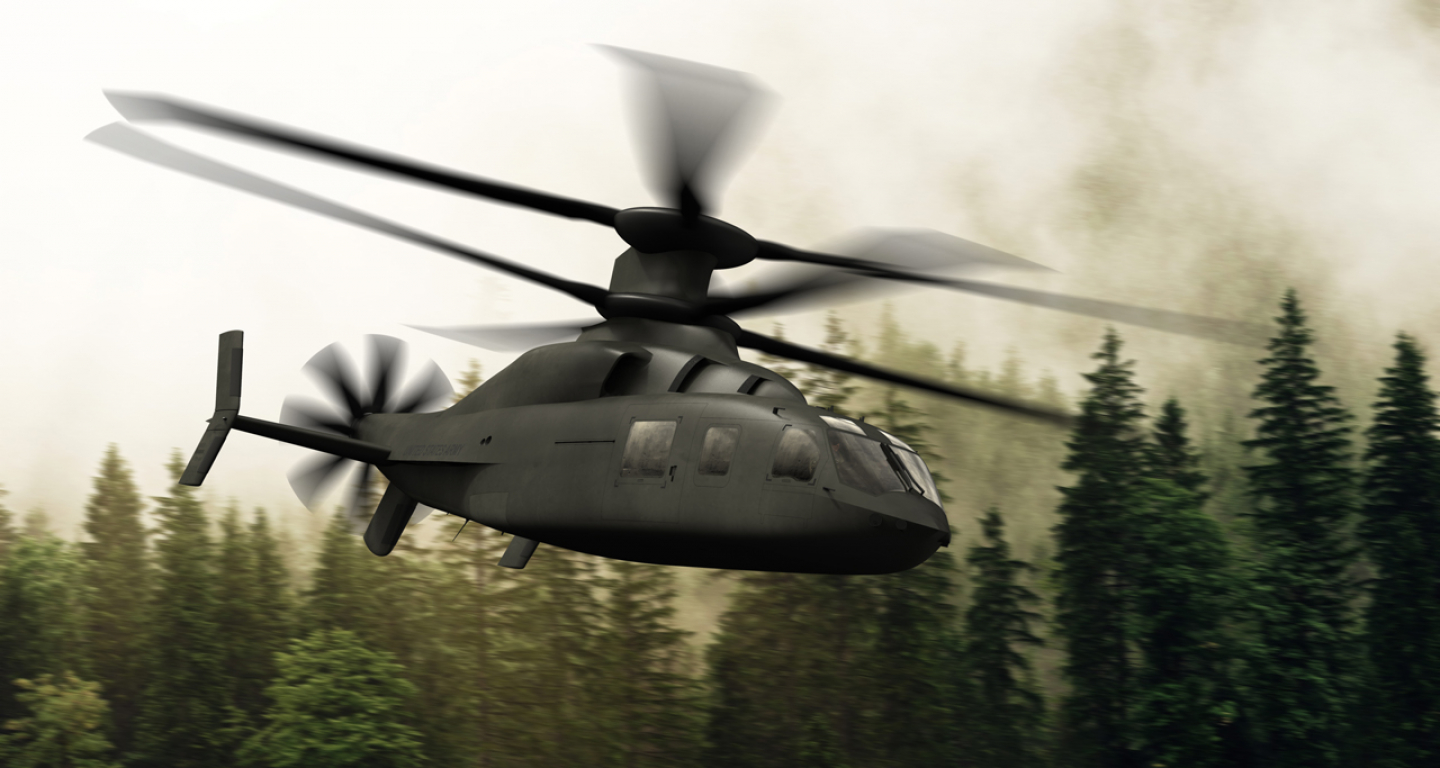
To
At the recent Association of the U.S. Army’s conference in Washington, executive officer for aviation BG Robert Barrie stressed the need to address shared problems with shared solutions. Specifi
A fine demonstration that both sides are fully engaged in the "war of words". The author is surprisingly light on the veneer she uses for a academic discussion on the validity of her claims. Something she is taken to task on in the comments.

